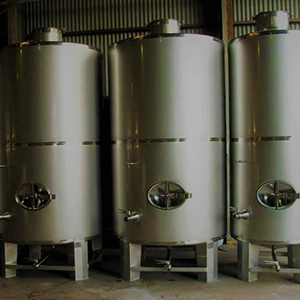Why stainless steel tanks are used in wineries?
When it comes to wine making people employ different types of processes. These processes define the art and style of the winemaker. There are many decisions to be taken that can change the color, the flavor, and the taste of the wine.
One such important decision that the
winemaker has to make is about the storage vessel to be used during the
fermentation process.
Although there are different types of
fermentation vessels such as oak vessels, concrete vessels, and stainless
steel wine tanks, it is the stainless tanks that are in high use
especially in the wine making industries.
Why is
stainless steel considered to be the best storage vessel?
If the stainless steel tanks are used for the wine making process the
usual process is more reduction than oxidation.
For this the fermentation stainless
steel tanks for wines are always closed any head space is filled with
inert gases so that there is almost no oxygen in the tanks.
The taste of such wines is more
refreshing and lighter in color. The best part is that the stainless steel does
not give any distinct odor or flavor to the wine. Thus the taste is very
natural. Due to its high refrigerating capacities, it is the best material for
fermentation tanks.

The term "Stainless steel process tank " is a misnomer since it does stain. Instead of staining proof or stainless, it would be more appropriate to term it stain-resistant. It is also much more corrosion and rust-resistant than regular steel. This makes it a viable solution for any sector that works with corrosive or acidic compounds that quickly wear out traditional tanks and equipment. To get the finest process tanks, go to the Eptex Coatings website.
ReplyDeleteI always wondered where one could buy such a steel tanks
ReplyDeleteHorizontal tanks are a type of storage container commonly used for a wide range of applications, including the storage of crude oil, chemicals, and water. Their horizontal orientation makes them more stable and accessible for maintenance compared to vertical tanks. This design is particularly advantageous in situations where height constraints exist or when it is necessary to distribute the pressure more evenly across the tank's surface.
ReplyDelete